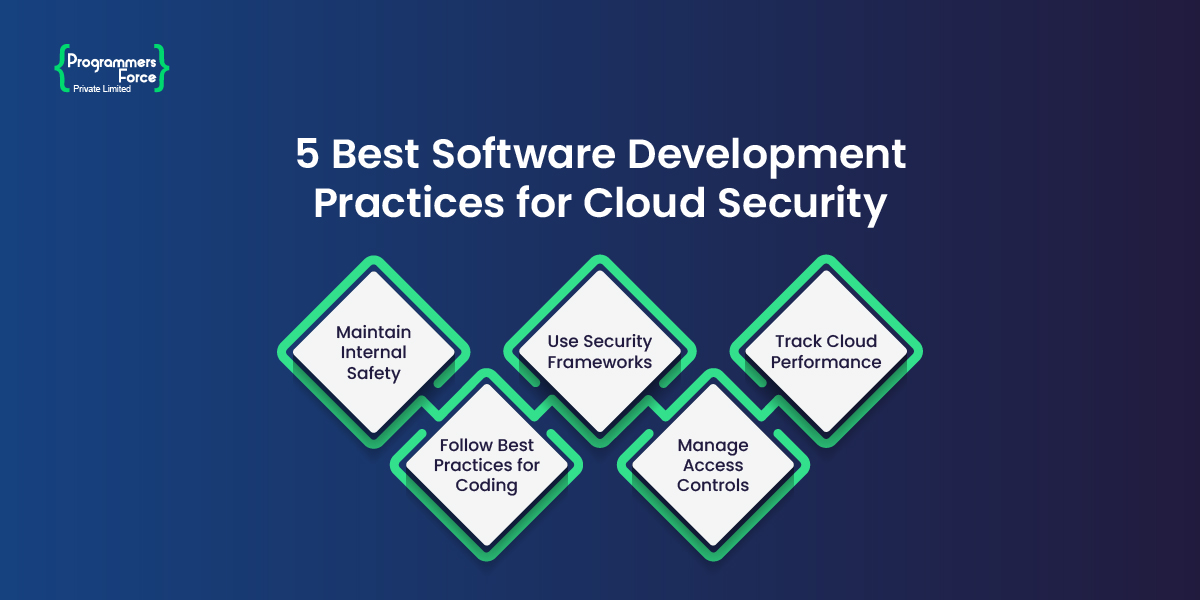
How Software Development Process Can Directly Impact Cloud Web Security
The software development process is integral to every business operation. It determines how a digital solution operates and how accurately it collects and processes data. Cloud security is no different, as robust software can significantly improve online operations, ensuring tight security and transparency. Software development is vital in addressing all the prevailing cloud breach concerns in the modern development landscape.
According to the survey, 80% of companies have experienced at least one security breach in 2022. This indicates the attackers now target cloud solutions. This blog will walk you through the industry-level software development process that helps safeguard cloud networks from attackers.
Strengthening Security with Web Cloud Computing Solution
Web software development is key as it can significantly strengthen cloud security, from protecting internal organisational networks to managing access control and creating new online protection frameworks.
Attackers feed on various implementation loopholes to destabilise running cloud networks, impacting business resources and causing heavy financial losses. Distributed Denial of Service (DDoS) attack is the prime example of slowing down a cloud platform with thousands of botnets that flood the network with malicious traffic.
A well-composed web software development service can handle DDoS attempts by blocking the attack and temporarily pausing operations to prevent sluggishness across networks. Don’t worry; all these cyber attacks can be prevented by maintaining web software solutions with these five layers of protection.
5 Layers of Defense from the Software Development Process

Regardless of any cloud computing technology service in the industry, web security is essential for building web applications. It serves as a foundation for crafting cloud-based software solutions. Businesses can prevent major attacks and easily improve the cloud-based platform’s overall efficiency by ensuring a secure software development foundation. The first step in getting a sound grip on cloud infrastructure0 is understanding the threats that can cause hefty losses. Other than that, here are the 5 software development practices that can end cyber-security concerns for any business.
Network Security Controls: Maintain Internal Safety
The first step in ensuring cloud security is securing internal controls. It is often overlooked by many firms, which causes them to give away a crucial gateway to attackers. Maintaining internal controls acts as the first line of defence, and if well built, this line can protect internal networks from instructions and unauthorised users.
To achieve internal network security, businesses go for a process which divides the network into several segments. This operation of network segmentation ensures that even if someone tries to hijack a network node does not affect other segments.
Other than network segmentation, internal firewalls also play a crucial role in protecting against threats that may have bypassed the external security protocols, i.e., external firewalls and authorisation checks.
Write Clean Code: Don’t Leave any Loopholes for Attackers
When building web software solutions, using industry practice for clean code can help create a scalable and efficient end product which also acts as a bedrock for web security in cloud computing technology. Following secure coding guidelines such as commenting, writing clean code, and using efficient algorithms can eliminate vulnerabilities in the program that attackers love to exploit.
Input validation is one technique in which the user inputs are validated before further processing. This ensures that the client enters expected data and can help prevent severe cyberattacks such as SQL injections.
The use of Application Programming Interfaces (APIs), which come from a secure source is another critical aspect that can help in preventing cyber attacks. APIs are used to fetch and send data over the network, and ensuring that these APIs are authorised can help protect sensitive data.
Standardise Your Application: Use Security Frameworks
Another crucial aspect most web-based cloud services use is security frameworks. These solutions provide businesses with a systematic approach to creating web applications that follow a set of policies and procedures. It can help mitigate security risks by ensuring the global compliance requirements are met.
There are many international software development process guidelines and frameworks, such as ISO 27001 and NIST 800-53, that highlight information security protocols. Adopting such frameworks can help businesses maintain secure control over their cloud software and ensure that their software development process aligns with the industry.
Manage Control Access: Authorise Each Request
Control access is another significant layer of defence in cloud software development. Controlling who gets into the network where all sensitive data is placed is necessary to prevent breaches and security lapses. There are many ways that can help in user authorisation, such as Identity and Access Management System (IAM) systems and Multi-factor Authentication (MFA).
Multi-factor authentication adds an extra layer of security in the form of an additional step before allowing access to the cloud. This can be a password, pin or biometric (such as face verification or fingerprint). Businesses can combine all these forms of verification to significantly reduce the risk of authorised access to the server.
Track Your Cloud: Monitor and Maintain Operations
Tracking and monitoring web software is as essential as setting up the cloud. In continuous monitoring and prompt response, businesses can observe cloud networks and online environments to detect security lapses before they escalate.
Anomaly Detection is the main task in the monitoring operation and involves continuously monitoring data traffic that flows through the network. On detection of unusual patterns, the cloud triggers a security threat. Using intelligent algorithms, firms can automatically alert the cloud admin of any anomalies.
Incident response planning is also crucial for reducing damage from cyber attacks. It includes the creation of a communication channel and steps for countering the attack. This well-prepared plan can ensure that no potential damage is caused during the incident.
How Programmers Force Can Help
In conclusion, the software development process can determine the efficiency and security of the cloud. Using industry best practices can help build a strong line of defence against security breaches and cyberattacks that can cause the loss of millions. The Programmers Force is well-versed in protecting the world’s leading cloud solutions with its best-in-class software development approach. We ensure high cloud security and build web software development that protects data and user privacy. Contact us now to learn more about how we fulfil these 5 layers with our innovative development options.










